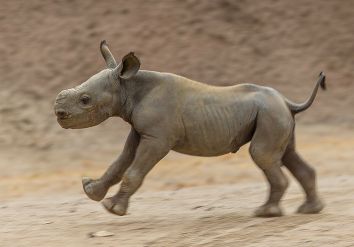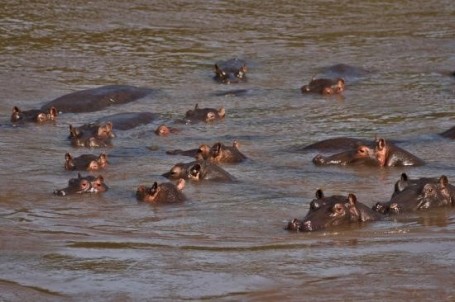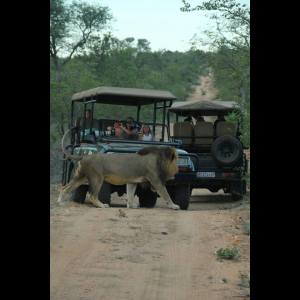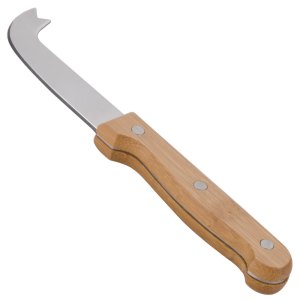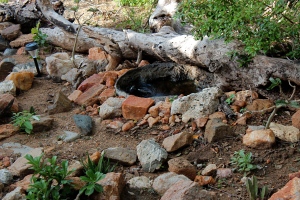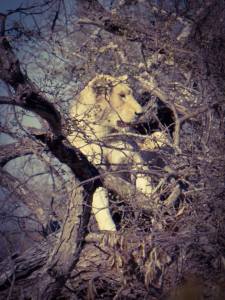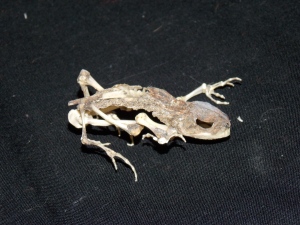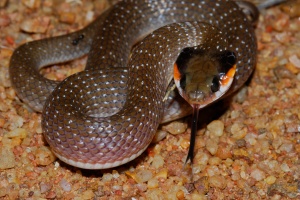Years ago, a colleague of mine arrived at work looking like he had lost a West Side Story-style knife fight. Twice.

He was looking kinda pale, too.
He had two long vertical slashes on his face, a cut across the bridge of his nose, and his hands and arms had more of what CSI Miami calls “defensive wounds” than they had actual skin. He was a mess. Had he been mugged? Involved in a domestic dispute? Got caught up in a turf war with the Bloods and the Crips on a Tuesday night after work? He had not. He had tried to bath his cat.
I, to my eternal discredit, laughed like a drain. He got torn to shreds because Mr Tibbles didn’t feel like getting his little paws wet.
I wasn’t laughing quite so much a few years later when I had to retrieve a frightened tomcat from a thorn tree. Jesus. It’s all very well lying in bed with a curled up, animated hot water bottle purring at your feet on a cold night, but dealing with an unhappy cat is like trying to fix a running combine harvester from the inside. Whoever called what cats do to you a “scratch” was clearly unfamiliar with the word “slash”. I have scars.
I tell you this not to demonstrate that I have an occasionally unkind sense of humour, nor that I am intimately familiar with the concept of karma. I tell you this because it cuts to the heart of what cats are. Cats are balls of sinew, muscle and fur covered with blades. Even big cats. Even huge ones (with the possible exception of cheetahs, but we’ll get to those later).
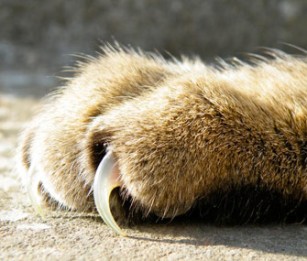
The bigger they get, the bigger the blades get.
Cats have sacrificed the stamina of their eternal enemies the dogs in exchange for stealth, power, sinewy grace and an absolutely stupendous capacity for violence.
But I’m getting ahead of myself. Yes, this is another post about the wildlife of the Lowveld. Yes, it’s about cats. And no, it’s not about the ones you are thinking of. The big ones. There are little cats in the bush, too. Those are the ones we’re looking at here. Starting with Mr Tibbles.
African Wildcat.
Decades ago, before we knew any better, we used, after a braai (barbecue) out in the bush, to leave a couple of chop bones and other leftovers out in the open just before we went to bed. We would sit in the dark on the step at the back door and wait to see if anything would come in to snap them up.

The dark gets that much more interesting when it might have lions in it…
This was a bad thing to do. The wildlife of Africa has made it through several million years without our help, and no good can come from training the creatures of the night to associate people with easy meals. There are some pretty gnarly things out there. Big things. With sharp teeth.
But back then, it was a magical time. We would sit in the shadows, motionless and unbreathing, our ears straining to pick out the snap of a twig or the crunch of a leaf that didn’t quite fit with the background noise of a night full of whispering life, our eyes trying to resolve the silver and the shadows of moonlight into a face or a body.
And the bodies would come. Hyenas trot through the night with heavy footfalls. Civets crunch through the undergrowth. Honey badgers puff and blow like tiny freight trains with emphysema. And African wildcats? They would come too. And they would make absolutely no noise at all. Nothing. Sometimes we would only spot them coincidentally when we turned on a torch to find our way off to bed.
I’m glad we did, though, because those are the only times I’ve seen a wild African wildcat.

This one must have been after breakfast scraps.
I’ve seen plenty of tame ones, though. So have you. You might even have one or two in your home. Yup. The domestic cat is just an African wildcat with a bit of the wild washed out. Just a bit though. Since they domesticated themselves a couple of thousand years ago, not much about their essential natures has changed. That’s why it’s so easy for cats to go feral.
And yes, cats domesticated themselves. Once we started farming, we started storing food. And once we started storing food, we got rats. Lots of rats. And mice. If you own a cat, you will know that they will go after birds and lizards and insects and frogs. But mostly they will go after rats and mice. African wildcats are rodent specialists, and once the rats and mice moved in on us, the cats followed by their own free will. That’s what makes cats so catty. So independent and aloof and free of the fawning adoration that dogs show for us. For most of their time with us, cats have lived alongside us, not under our care. All the fluffy cuddly stuff is a fairly new development.

I’m not too sure this one would rock the whole “feral” thing.
So you can learn a lot about wildcats by looking at the tame ones. Wildcats are solitary (as the tame ones prefer to be when we let them), territorial (that’s what that lovely night-time singing is all about), and strictly nocturnal (which is why your cat seems so damned lazy). And they are very, very good at hunting. Which is wonderful for wildcats but has been a bit of an apocalypse for any unsuspecting creatures our domestic cats run into. They have helped drive over 60 different species to extinction.
And they have one more species in their sights. Wildcats. Wildcats and domestic cats may be from the same domestic stock, but they aren’t the same. African wildcats have a very specific coat; grey with various darker spots and stripes, and reddish brown ears. They also have longer legs than domestic cats. Since domestic cats are so very good at going feral, they move into wild areas with ease and interbreed with the locals. Wildcats in marginal areas are starting to lose the longer legs and show more variability in colour. In a couple of hundred years, they’re going to all look like grumpy cat and get marketing deals on YouTube.

The wild called. I said no.
If you’ve been watching your tame cat, you will have noticed something a little unexpected for a supposedly solitary animal. Cats are extraordinarily good at communication. They communicate with their facial expressions, with the positioning of their ears and tails, with their postures, through scent, and with those gorgeous voices. Which seems like overkill for an animal whose main social strategy is never running into the neighbours. Until you remember what cats are. Sinew, muscle and blades. If every extremity except the tip of your tail is a vicious weapon, it pays to be very, very clear about your intentions.
There is one more thing that domestic cats can teach us about wild cats. All wild cats, even the big ones.
Wild dogs and hyenas make their living by running down prey. They seem to be able to go on forever. Cats can’t go on forever. They stick to short dashes. What they specialise in is sneaking up on things. And they are very sneaky indeed. Domestic cats can give us a little insight into how they do it.
An entire genre of YouTube videos has sprung up of cats walking down passages filled with dominos. It’s a remarkable thing to see. Without hesitation, a cat will stroll down a passage crowded with obstacles without so much as touching them.
Cats know where all the parts of their bodies are at all times. And they need to. For the sneaking. I once watched a leopard stalk a herd of impala for about ten minutes on a brightly moonlit night. It was excruciating. He managed to move forward about two metres in all that time. I counted him as unlucky that none of the impala died of old age.
But here’s the thing; he was walking through thick underbrush littered with dried leaves, and managed to do so without ever stepping on a twig or leaf, and without taking his eyes off the impala. This is even more impressive when you remember that by the time his back paws reached a spot, he hadn’t looked at that spot for minutes.
He failed. No impalas were harmed in the making of this post. It was no big deal though. He wasted a fair bit of time, but very little energy.
If you really want to know what the phrase “cat footed” means, here’s a dog being dog footed…
Which is lovely. But not all that stealthy.
Servals
While I have fond memories of African wildcats, I have absolutely none of servals.
I have a short mental list of the larger creatures of the bush that I have never seen. It gets shorter as time passes. Pangolins are on it, because they are so damn rare. Aardvarks were on it for ages, until I started seeing them all over the place.

I was, to be honest, drinking quite heavily at the time.
And servals are on it. I’ve never seen a wild one.
They aren’t particularly rare. What they are is very particular about their habitat. Servals live in tall, damp grassland, and it has shaped their bodies.
Their heads are small, about the same size as a big domestic cat’s. The rest of them, however, has been stretched out to give them a bit of an advantage in the tall grass.
They, like wildcats, eat birds and lizards and such, but specialise in rodents. They find them with the help of those satellite dish ears, and then jump up and over the grass and down onto them, like dolphins porpoising. Those are just little jumps for a serval. They can fairly casually jump 3 metres into the air to take down birds.
Servals are breathtakingly beautiful, tall, slender and graceful with a constellation of spots and stripes over a pale yellow background, like a tiny king cheetah.

Which is a pity. People are now taking them out of the wild and breeding them with domestic cats. The outcome is the world’s largest domestic cat, a rather fetching creature called a savannah cat, whose defining characteristic is that it’s not allowed to live on the savannah anymore. Oh well…
Caracal.
Growing up, we didn’t have a television in our house. I did, however, get to watch the occasional show. One of the earliest TV movies I can remember was a horror called “The Claw!” about a young boy who gets stalked across the hills of his family farm by a terrifying and mysterious creature. A caracal.
It was an awesome movie. Haunting and atmospheric. A South African equal to “Picnic at Hanging Rock”. I couldn’t sleep for days, knowing that some time, any time, one of these horrifying murder-beasts could launch itself out of the undergrowth and tear me to shreds, or at the very least scratch my dog quite badly.
I Googled the movie yesterday. Turns out it was actually called “Claws”, and has a rating of three out of ten on IMDB. One of the reviews started “This was the single-most horrible film I have ever been witness to…”

You won’t want to watch it with anyone else, either.
Oh well. It made a huge impression on me at the time. Huge enough to come back and haunt me a couple of years later when a caracal launched itself out of the undergrowth to attack my mother. Kinda.
I was visiting the Mountain Zebra National Park with my family, and we had stopped for a picnic at a small dam where you were allowed to get out of your car. My mother spread out a blanket and sat down to start getting lunch ready, while my dad took my sisters and me for a quick stroll around the water.
“Kul!” said my mother in the sort of voice adults use when they wish to point out imminent danger to other adults without alarming the small children in the area. This is an entirely ineffective sort of voice, and we small children swung around in very much alarm. With good reason. A caracal loomed glowering over my cowering mother.
My father grabbed us children and took a step backward. “Oh my God!” I thought. “It’s happening! The Claw! The Claw!” Viciously, the murderous cat began to purr at my mother, before savagely rubbing his cheek along her leg and strolling brutally over to a nearby patch of shade, where he flopped down menacingly in the dust and fell asleep.

My blood still runs cold at the thought of it.
“This,” I remember thinking, “is not what I have been led to expect…”
It took us a moment or two to realise that the caracal was wearing a radio collar, and we later learned that he had been hand-raised at a nearby ranger station. This should, technically, have stopped me from removing caracals from my list of unseen wild animals, but I decided that this sighting counted because he had so viciously attacked my mother. I’ve seen a couple since then, but they certainly aren’t easy to come by.
Which isn’t the same as being as being rare. Caracals are one of those rare wild creatures that manage to cling on in farmland long after the other wildlife has been wiped out.
Which is a problem. Because Caracals aren’t rodent specialists. Caracals are about the same size as Servals. But here’s the thing with cats; Small cats kill small prey with a very precise bite to the back of the neck, while big cats kill big prey by suffocating them with a bite to the throat. Servals kill their prey with that back of the neck bite. They are, round here, the biggest of the small cats. Caracals kill their small prey in the same way. But they don’t only take small prey. They kill those by suffocation. They are the smallest of the big cats.

Which leads us back to that problem. A 15kg caracal can kill a 60kg sheep. Caracals do not lurk around farmland as an undetected presence. They are at war with the farmers. Farmers shoot, trap, and poison caracals, and yet somehow the caracals persist.
Happily, the caracals I have seen have not been at war with anybody. In the bush they eat anything from reptiles, birds and rodents to buck the size of duikers. Like the servals, they can cheerfully jump 3 metres into the air, and are supple and agile enough to knock flying birds out of the sky.

Sensible bush-goers wear protective headgear outdoors.
And that’s just about that for the caracal. Except for the ears. There’s something up with cats’ ears. Wildcats have rufous ears, in contrast to their grey coat. Cheetahs, servals, lions and leopards have black ears with white patches. Caracals have charcoal ears, in contrast to their reddish coats. It’s all part of that communication thing I mentioned earlier.
Thing is, all of those contrasting colours are on the back of the ears. If you survive by stalking, you don’t want to give the game away by blending perfectly into your environment except for the two striking flags waving around on the top of your head. The ears are there mostly there to signal to the cats behind you, like your kittens or cubs following you through thick grass or, if you’re a lion, your pride stalking your prey with you.
Cats do sometimes flatten their ears so you can see the back of them from the front. If you ever see a cat doing this, whatever you do don’t try to give it a bath. That is a very unhappy cat.

Maybe just wipe it down with a damp cloth.
Caracals have taken things one step further. Their ears are tipped with tufts of hair like the eyebrows of an aging Anglican priest. Their ears have become semaphores whose every movement is exaggerated. In fact the caracal’s whole face looks like it is designed to exaggerate every expression. Black lips with white borders. Black rimmed eyes surrounded by white. A black nose with a white background. Black and white lines furrowing the brow.

Either it’s snarling or it just saw a man fall off a bicycle.
Nobody snarls like a caracal. If anyone has ever tried to bath a caracal, they should be given a medal before being institutionalised. I’m not sure why they have such expressive faces. Maybe as the smallest of the big cats they are extra prickly, like the small guy at the end of the bar who keeps trying to stare you down while his bigger friends ignore you. It seems that caracals need to be extra clear about what and when they communicate with each other. It makes for a very striking cat.
And that’s that for the small guys. After this, things get bigger. And easier to find.
















